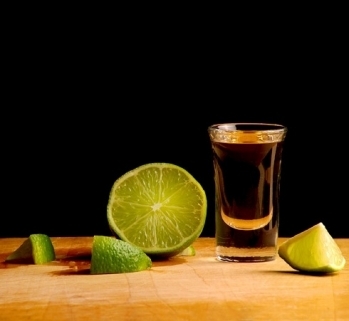
The story of this exquisite drink goes back many centuries. It is said that native people of Jalisco once had to seek shelter from a storm in a cave and that during the storm lightening hit some agave plants which burned and smoldered for hours. When the storm passed, they noticed a good smell coming for the agave so they tasted it and that was how the plant was discovered.
The story continues that soon after a man left some agave juice behind for many days and when he returned to his home he discovered a smell had impregnated his house. Looking at the juice, he noticed that little bubbles where forming dense white foam. He separated the juice from the foam, and with that, mescal was invented..
For the Aztecs, this beverage became something sacred, consumed only by leaders and priests during religious events and celebrations.
In the 16th century, the Spanish took control over the region and used agave plants to build roofs, as nails and pins. Dried leaves were used for fuel and the ashes were used for soap, which helped to heal wounds. The Spanish liked their Spanish wines and liquors so they banned the production of mescal.
During the 17th century, the Spanish allowed mescal to be produced again because even though it had been banned, people were still secretly making it in their homes. Eventually, the Spanish producers included the process of distillation, one that they had learned during the Moor Invasion.
Tequila is liquor made by the distillation of mescal, which is obtained by the fermentation of a plant known as Cerofica Agave Tequilana. To be considered tequila, it must contain at least 51% fermented sugar obtained from the Agave. Also, although the Agave can be grown in many parts of the world, it has to be grown specifically in Jalisco to be officially considered Tequila.
Tequila became Jalisco’s first export and the money collected from the taxes on tequila exports was used to build aqueducts and government buildings. During the last years of the 1800’s the railroads still made European beverages accessible, making the tequila a drink for the “lower classes”. However, tequila recovered its importance during the Mexican Revolution since everything made in Mexico was considered a patriotic symbol.
From the 1930s through the 1980s, the bulk of tequila being produced was of the blended mix variety and very few 100% agave tequilas went to market. However, in the late 1980s the rising popularity of single malt scotch whiskies and expensive cognacs in the international marketplace did not go unnoticed among tequila producers. New brands of 100% blue agave tequilas were introduced and sales began a steady growth curve that continues to this day.
Written by Víctor Ramos for Caras de México. Click here to read more articles examining Mexican identity.